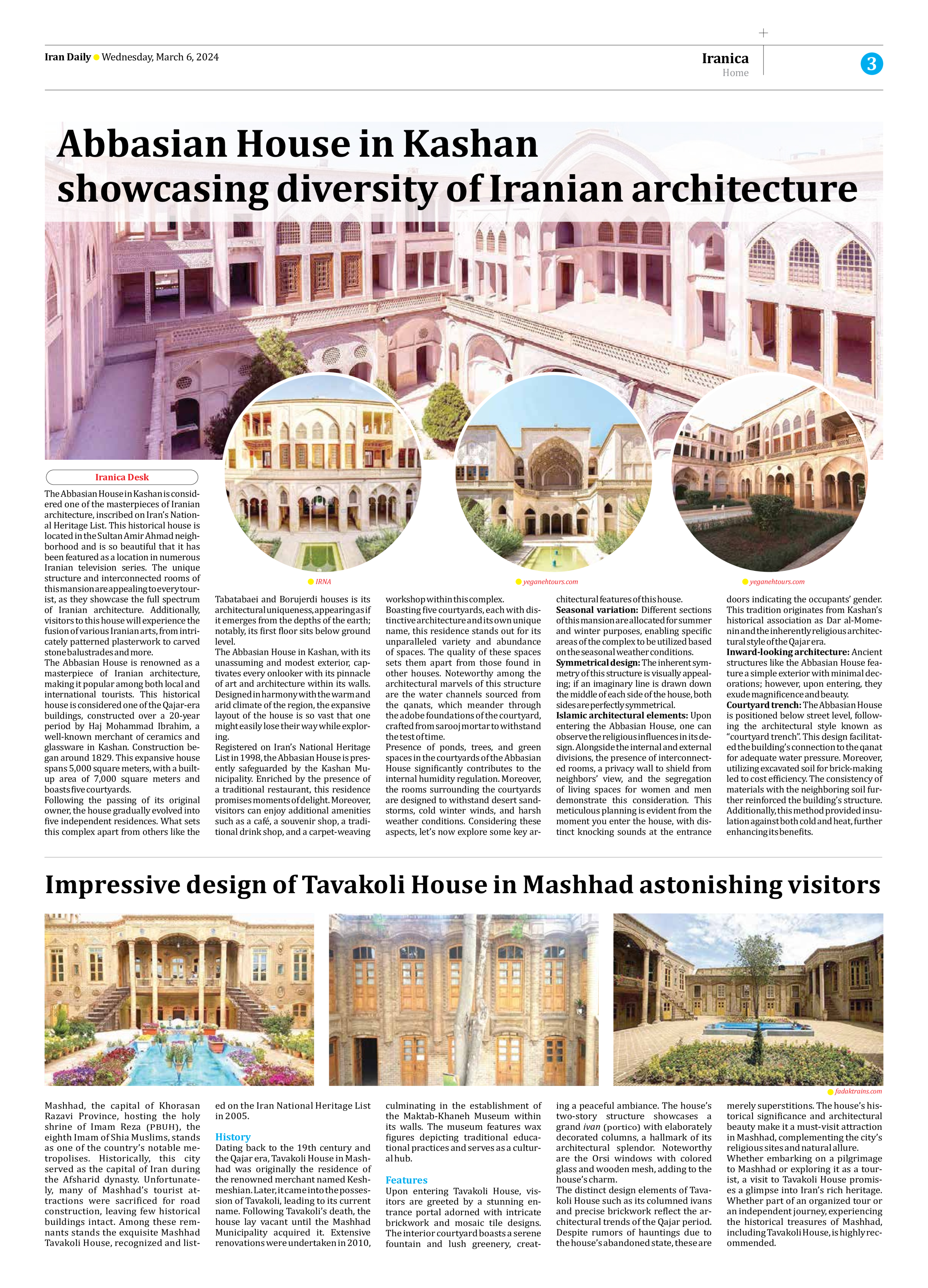
Impressive design of Tavakoli House in Mashhad astonishing visitors
Mashhad, the capital of Khorasan Razavi Province, hosting the holy shrine of Imam Reza (PBUH), the eighth Imam of Shia Muslims, stands as one of the country’s notable metropolises. Historically, this city served as the capital of Iran during the Afsharid dynasty. Unfortunately, many of Mashhad’s tourist attractions were sacrificed for road construction, leaving few historical buildings intact. Among these remnants stands the exquisite Mashhad Tavakoli House, recognized and listed on the Iran National Heritage List in 2005.
History
Dating back to the 19th century and the Qajar era, Tavakoli House in Mashhad was originally the residence of the renowned merchant named Keshmeshian. Later, it came into the possession of Tavakoli, leading to its current name. Following Tavakoli’s death, the house lay vacant until the Mashhad Municipality acquired it. Extensive renovations were undertaken in 2010, culminating in the establishment of the Maktab-Khaneh Museum within its walls. The museum features wax figures depicting traditional educational practices and serves as a cultural hub.
Features
Upon entering Tavakoli House, visitors are greeted by a stunning entrance portal adorned with intricate brickwork and mosaic tile designs. The interior courtyard boasts a serene fountain and lush greenery, creating a peaceful ambiance. The house’s two-story structure showcases a grand ivan (portico) with elaborately decorated columns, a hallmark of its architectural splendor. Noteworthy are the Orsi windows with colored glass and wooden mesh, adding to the house’s charm.
The distinct design elements of Tavakoli House such as its columned ivans and precise brickwork reflect the architectural trends of the Qajar period. Despite rumors of hauntings due to the house’s abandoned state, these are merely superstitions. The house’s historical significance and architectural beauty make it a must-visit attraction in Mashhad, complementing the city’s religious sites and natural allure.
Whether embarking on a pilgrimage to Mashhad or exploring it as a tourist, a visit to Tavakoli House promises a glimpse into Iran’s rich heritage. Whether part of an organized tour or an independent journey, experiencing the historical treasures of Mashhad, including Tavakoli House, is highly recommended.







